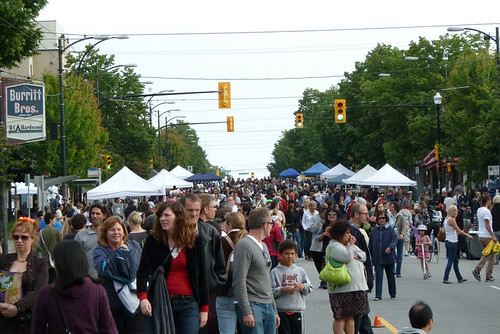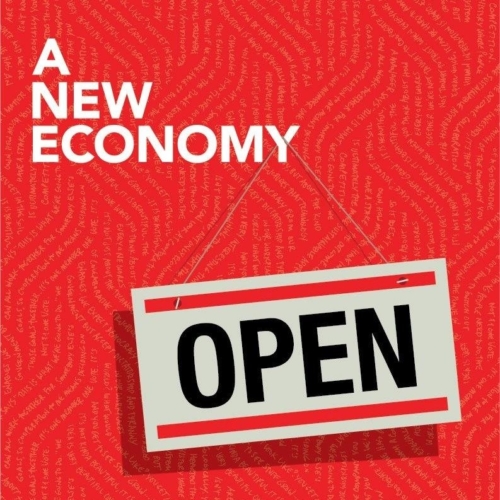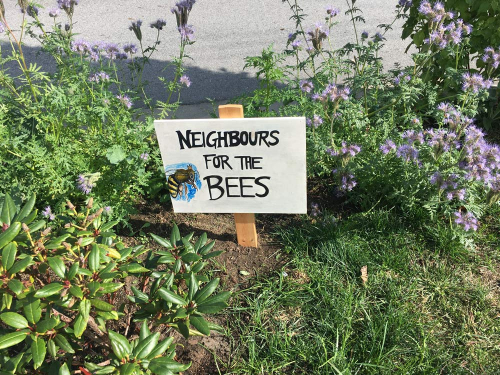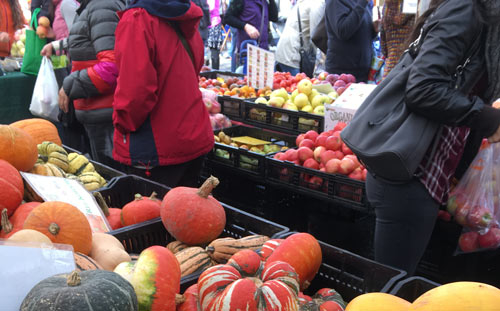Kick the pavement: cities are for people
I made the observation recently that each of us learns to walk, then virtually everyone learns how to bike, then we’re taught to drive. At that point, it’s like the first two are reduced to merely leisure activities or, to some people, hard work. Curious, isn’t it? Culturally, being able to drive and having a nice car is a measure of success. You know, because the bus is the “loser cruiser.” At the same time, being fit and skinny is attractive. They’re a bit at odds with each other, are they not? Sorry, can’t come over tonight — gotta drive to the gym. Whew, now you’ve got car payments, parking fees, insurance, AND a gym membership to keep tabs on. Better get some cheap take-out for dinner.
Whoa, hold up!
How did we get ourselves into this mess? Cities are designed for cars, not people.
Drive-thrus? For cars. Roads? Also for cars, let’s not kid ourselves. Driveways, parking lots, gas stations, auto dealerships, parkades (multi-level parkades are such a terrible blight and waste of real estate), street parking, alleys and lanes — that’s a lot of pavement and it all adds up, to about 40% of the city in fact. (I’m not sure if that figure represents sidewalks as well, but I kind of think so.) So when a parking lot gets torn up in Vancouver to build housing — especially affordable housing, as is the case with 60 W Cordova — I get pretty excited.
And of course, as I wrote in a previous post about why bikes are good for Vancouver, driving disconnects people from their community, including the cultural and natural fabric of it. That has impacts on our security as well, because we can’t easily look out for our neighbours if we don’t know them.
It’s time to start reclaiming cities for people and stop subsidizing cars and oil companies. The best way, I think, to get people out of their cars is to offer alternatives that meet their needs, and then sell them on it. A recent Vancouver Sun article [link?] about transit’s success during the Olympics highlighted that an increase in service has a dramatic positive effect on ridership. The new bike lanes (Burrard Bridge, Hornby St and Dunsmuir) have attracted new ridership, and as the Greenest City plan unfolds, more people will have access to a network of safe cycling infrastructure, and that’s huge!
As we promote alternatives, I support reducing parking in the downtown. Some businesses resist the removal of parking spots for bike lanes because they fear it will negatively impact their bottom line. That’s a fair concern, except it’s not warranted. For one, and I don’t quite know why, regular cyclists are overwhelmingly in a high income bracket, well-educated, and predominantly middle-aged men: lots of purchasing power there. Second, think of how many bikes will fit in a single car parking spot: about a dozen. That’s a ratio of 12 to one, meaning if we replaced 10 car parking spots with bike parking, and assuming they’re all full, that’s 120. Assuming the cars were single-occupant, that’s 110 additional potential patrons. Plus, businesses that actively support cycling are tapping into a very strong, tight-knit, vocal community. (There’s a new bike rack outside Nuba on Seymour. Yeah! I can’t wait to use that.)
Active transportation — walking, cycling, skateboarding, public transportation — promote healthy communities in a variety of ways. As our communites become more diverse in their structure, and it becomes easier to leave the car at home, I suspect gyms might find their patrons leaving, saying, “No thanks, I biked to work today. I got my exercise.”
As for me, I can’t wait to bike to work again. Over 17 kilometers? No sweat! Well, there is actual sweat, but you know what I mean.
 This daily green blog challenge is in celebration of David Suzuki’s 75th birthday, supporting the David Suzuki Foundation. Please help me out by sponsoring me online now.
This daily green blog challenge is in celebration of David Suzuki’s 75th birthday, supporting the David Suzuki Foundation. Please help me out by sponsoring me online now.
Note: I am writing solely on my own behalf, and do not claim to represent the David Suzuki Foundation or its views here.




